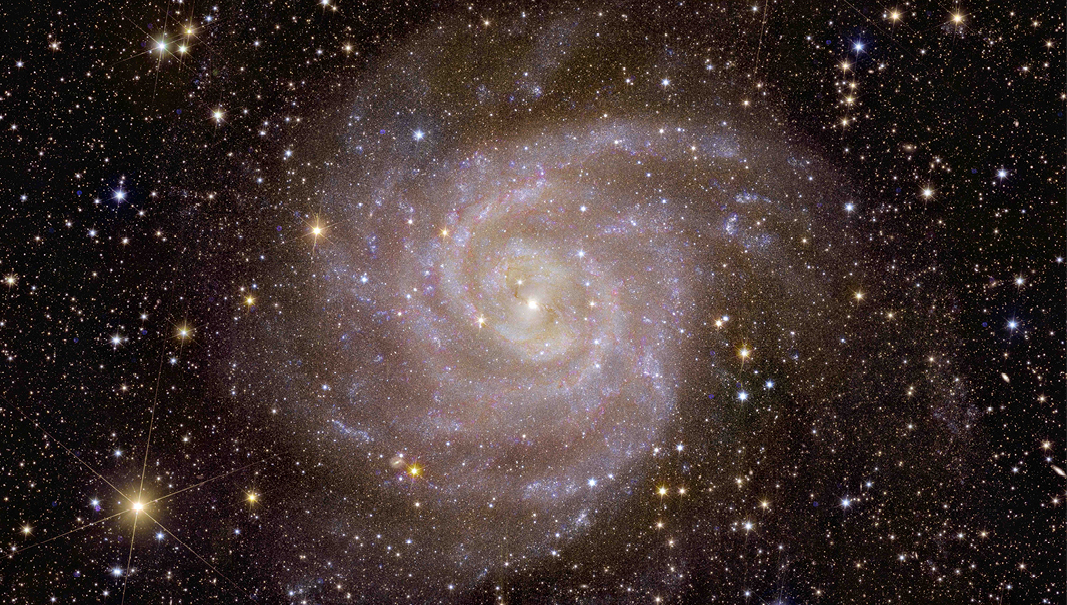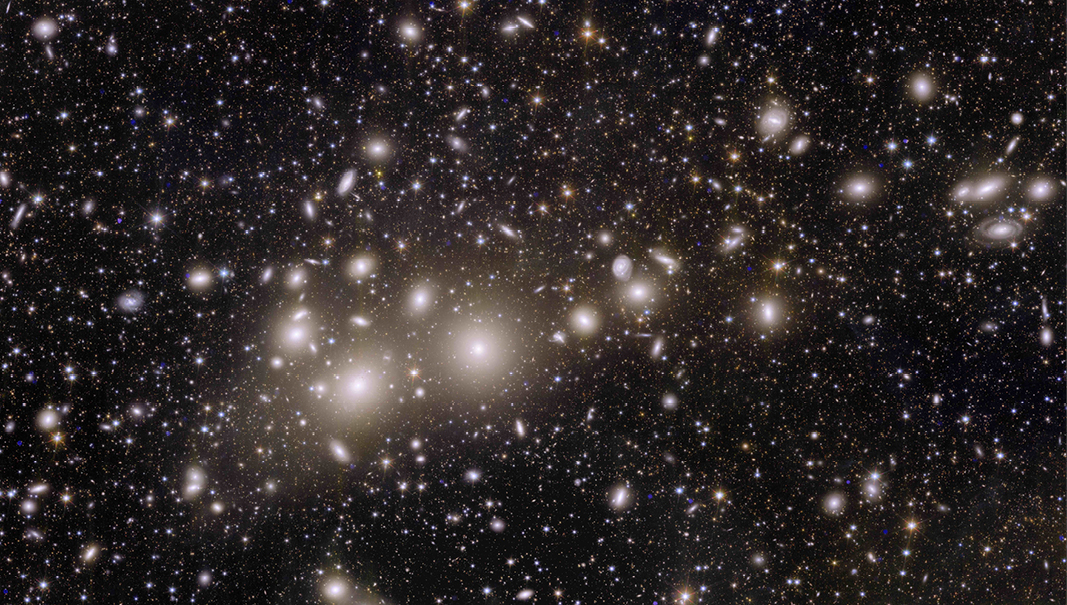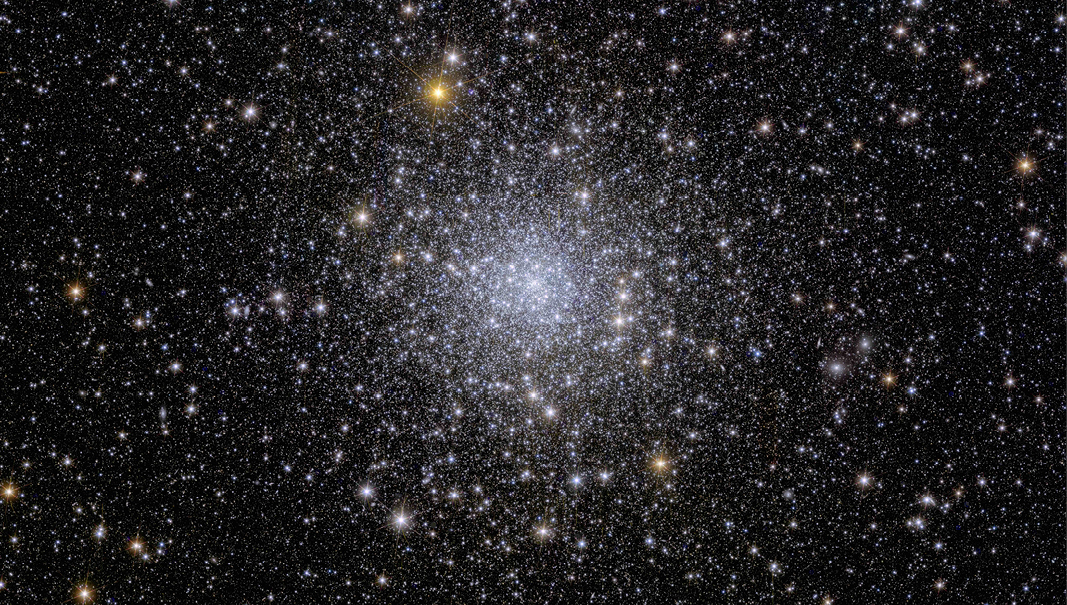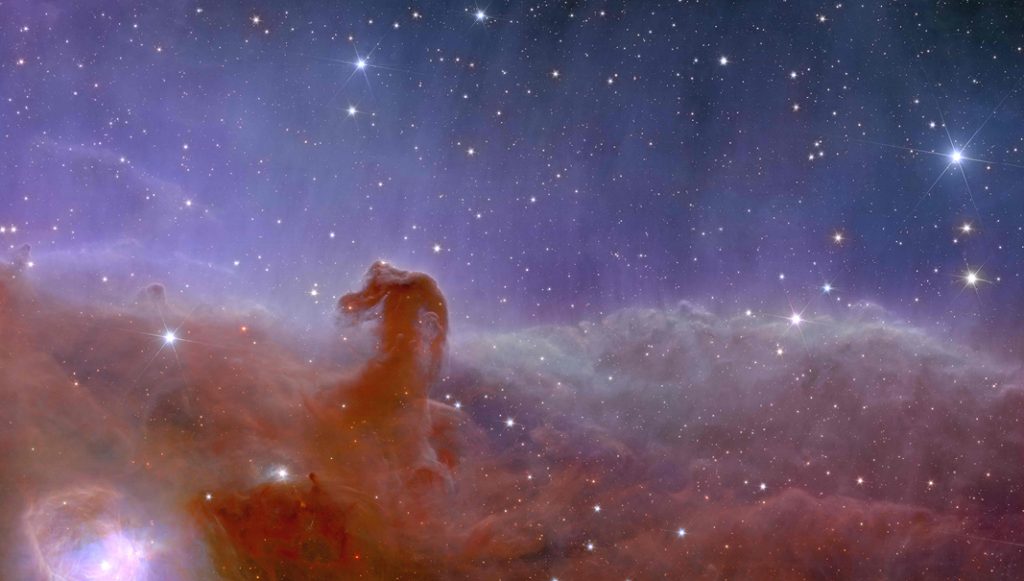Euclid is a European Space Agency mission designed to explore the evolution of the dark Universe. Dark energy accelerates the expansion of the Universe and dark matter governs the growth of cosmic structures.
To do this, Euclid will observe billions of galaxies at a distance of up to 10 billion light-years covering more than a third of the sky. Euclid will give us two main types of data; on the one hand it will measure the shapes of billions of galaxies, which will provide us with information about the gravitational effects caused by dark and on the other hand it will measure the brightness and intensity of the light of galaxies, which will allow to measure the redshift and calculate their distance.
This will show how the cosmos large-scale structure evolved over time. This “looking back in time” will help us understand the role of dark matter in accelerating the expansion of the Universe.
Made in Spain technology present in this mission provides key elements for the achievement of its scientific goals.
About the image
At approximately 1375 light years away, the Horsehead visible as a dark cloud shaped like a horse’s head is the closest giant star forming region to Earth.
Euclid’s view of spiral galaxy IC 342

About the image
The data in this image were taken in just about one hour of observation. The galaxy appears whiter at its centre where more stars are located. Younger blue stars and older red stars can be seen in the image.
Euclid’s view of the Perseus cluster of galaxies

About the image
The image shows 1000 galaxies belonging to the Perseus Cluster, and more than 100 000 additional galaxies further away in the background. Many of these faint galaxies were previously unseen. Some of them are so distant that their light has taken 10 billion years to reach us.
Euclid’s view of globular cluster NGC 6397

About the image
Globular clusters are collections of hundreds of thousands of stars held together by gravity. Globular clusters are some of the oldest objects in the Universe. That’s why they contain a lot of clues about the history and evolution of their host galaxies, like this one for the Milky Way





